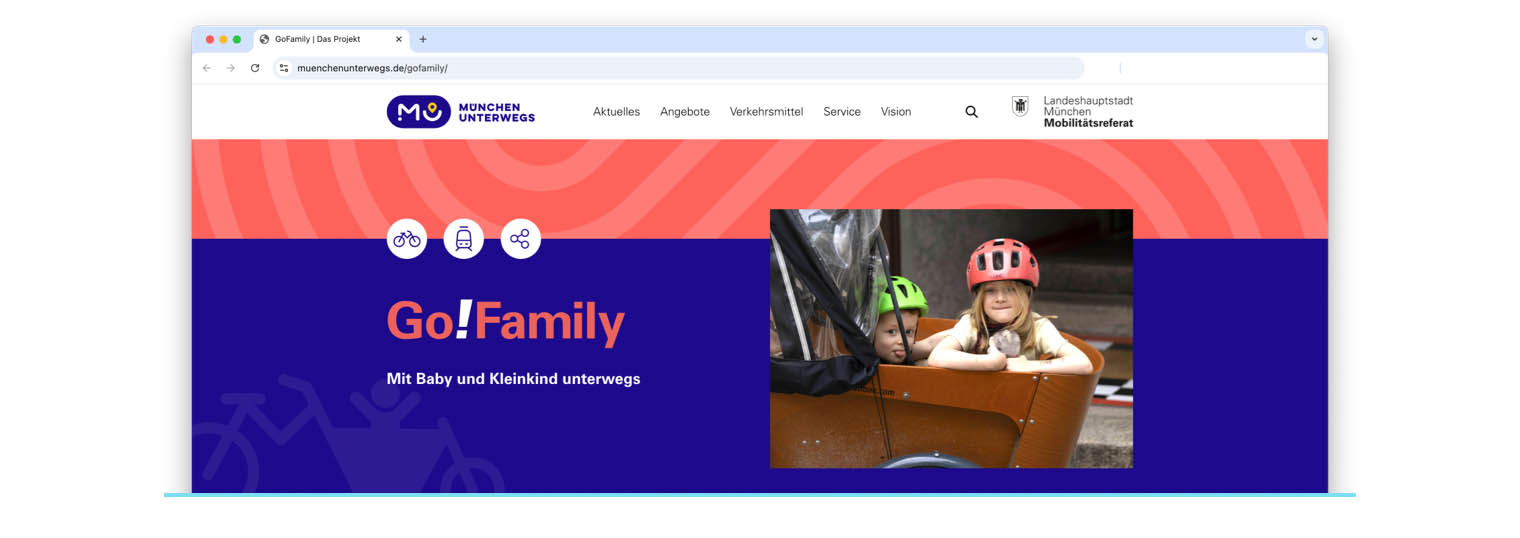.jpg)
8 min read • July 8, 2025
Marketing for shared mobility providers is crucial in order to attract new users and remain relevant in a dynamic mobility market. Typical challenges for sharing providers are high barriers to entry for customers and entrenched mobility habits. Effective strategies are needed - from a targeted user approach to emotional storytelling. In this article, we show three best practices for successful marketing.
Education
Shared mobility providers face the challenge of overcoming deeply rooted mobility habits and high entry barriers among potential users. Targeted measures such as psychologically based “nudges” that subtly guide behavior - for example through visibility in the cityscape, social proof or positive wording - help to attract new customers. In addition, life-changing events such as moving house, changing jobs or starting university are ideal occasions to address people in receptive phases of their lives with suitable mobility offers. Emotional storytelling and authentic user stories in turn strengthen trust and make the benefits of shared mobility tangible.
Many potential users of shared mobility services are initially reluctant to embrace the concept. By understanding the reasons behind this and offering solutions, you can help lower the barrier to entry for your target group and attract new customers.
Some people are simply not yet aware of the possibility of sharing or do not know how it works or what the advantages are. After all, it is still a relatively new form of mobility that still requires education and information from providers. Others are aware of the offer and its advantages, but still stick to their usual form of mobility - often their private car.
Psychology explains this behavior through the status quo bias: a phenomenon in which people show a strong tendency to cling to the status quo. Even if better alternatives are objectively available, many stick with the old - out of fear of potential losses, to avoid cognitive effort (habitual behavior requires fewer mental resources) or because they assume that they would regret an active decision that leads to a negative experience more than inactivity.
Nudges help to overcome this barrier: small, targeted impulses that encourage people to behave in a certain way - without prohibitions or financial incentives. They influence the decision-making framework to make desired actions more likely.
People are guided by what appears present to them. What is visible is perceived as more available, more likely or more normal - regardless of the actual figures. True to the motto “all you see is all there is”. If people have the feeling that sharing is ubiquitous and easily accessible, they are more likely to try it out for themselves.
Make sure your offer is visible in the cityscape to bring your offer into people's everyday lives: via your sharing vehicles, station branding and advertising at relevant locations such as train stations, parking lots, petrol stations and public transport. Cooperation with employers or transport associations can also help, for example through exclusive benefits for public transport users or mobility offers as part of corporate benefits.
Choosing the right locations for your vehicles →
.jpg)
People often base their decisions on the behavior of others - especially when they are unsure. What many others do or think is good automatically seems more trustworthy, correct or attractive.
For example, work with statements such as “87% of our new customers continue to use sharing after the first month”. Refer-a-friend programs are also effective in this context, as they rely on trust in the social environment.
Framing is about how information is presented - not just what is said. The way it is presented has a significant influence on how people evaluate decisions.
Therefore, use a targeted, positive choice of language. Focus on the benefits rather than talking about doing without. Example: “Save €300 a year with the sharing model” instead of “ Give up your own car”.
These are preset decisions that apply automatically if users do not actively change anything - and therefore have a strong influence on actual behavior.
New customer discounts can also contribute to this if they are applied automatically or are automatically deposited in the form of a starting credit after registration. The preset map view in the app also works as a default - it directs the user's gaze to specific stations or vehicles.
Geo-targeting can also become a nudge if it helps to gently influence the behavior of the target group. Geo-targeting refers to the location-based targeting of users - i.e. the targeted display of information, offers or notifications based on their current location.
Online, you control geo-targeting via digital platforms such as Google Ads or advertisements in social media in order to be visible where your offer is available and potential users might need a mobility alternative. Offline, geo-targeting also includes, for example, advertising measures near mobility hotspots, new development areas or events with a shortage of parking spaces.
.jpg)
People are most receptive to changes in behavior when their lives are changing. In behavioral psychology, this is referred to as habit discontinuity - phases in which familiar routines are interrupted and new patterns of behavior can emerge.
Such transitional phases, such as moving house, changing jobs or starting university, offer teachable moments or windows of opportunity. At these moments, consumers are particularly open to new information, brands, messages and offers.
Shared mobility providers should therefore be present precisely when the reality of people's lives changes - and come up with clear, relevant offers that fit into the new everyday life.
Reach more customer segments with a subscription model →
A classic example is relocation: people who move to a new city are often not yet firmly committed to certain forms of mobility and have to familiarize themselves with new circumstances anyway. This is precisely where many successful providers come in - for example with welcome packages for new residents, information material when re-registering or inexpensive introductory offers that are handed out directly upon registration in the city.
The interest in flexible, practical mobility solutions is also often particularly high when starting a new job or setting up your own business. Collaborations with employers, the Chamber of Industry and Commerce or professional associations offer valuable points of contact to reach precisely these target groups.
Another example: the start of studies. Enrolment at a university, freshman weeks or university information days are perfect opportunities to bring students into contact with shared mobility at an early stage - for example through targeted information, welcome offers or integration into the university ecosystem through parking spaces on campus.
In addition, personal life events such as a wedding, a separation or starting a family can bring new mobility needs. Perhaps the question arises as to how many cars will be needed in the future, or if a car is suddenly no longer needed due to a separation.

Go!Family is a project of the Mobility Department of the City of Munich that aims to promote sustainable mobility for families.
Young parents automatically receive information by post about the various mobility options in the city and special offers.
As part of the program, families have access to special trial offers for child seats or bicycle trailers as well as discounts for sharing services or public transport.
Storytelling in marketing for sharing offers makes the concept tangible, emotional and comprehensible.
When potential users see how other people have successfully integrated shared mobility into their everyday lives, the inhibition threshold drops and they are more likely to try it out for themselves. Authentic stories convey credibility. Instead of theoretical benefits such as “sustainable” or “cost-effective”, the focus is on real experiences:
These personal perspectives give potential users the opportunity to recognize themselves - according to the principle: If it works for person A, it could work for me too.
.jpg)
The focus of the stories should always be on the people and their experiences - not on the product. Good stories show how life changes through shared mobility: more freedom, less stress, a small contribution to climate protection. And they can point beyond the individual, for example to social change towards more liveable cities or innovative mobility concepts.
Authenticity, relevance and a clear arc of suspense are important for successful storytelling. Every good story starts with a problem, shows a solution and ends with a positive experience. In this way, shared mobility is not just explained, but experienced - and that is what is most convincing in the end.
Various formats are possible for storytelling:
You can also use user-generated content, i.e. content created directly by users. This not only promotes trust, but also strengthens the community surrounding the offer.
If you would like to spend some money on good content, influencer marketing may also be an option: Identify suitable influencers or creators in your target area to whom you would like to offer a collaboration.
This usually works in such a way that the influencers create qualitative content about your offer on social media and receive remuneration from you in return.
Your advantage: You gain access to the influencer community and benefit from their trust.
How Popcar uses influencer marketing →

To turn even more people into enthusiastic shared mobility users, you as a provider not only need a good business model, but also strong marketing.
Keep the person at the center: Understand which psychological patterns become barriers to entry and how you can overcome them, recognize decisive moments in the lives of your potential users that you can target, and put the users themselves at the center of your storytelling in order to reach others emotionally.
In the best case scenario, you will not only gain new users, but also real fans.